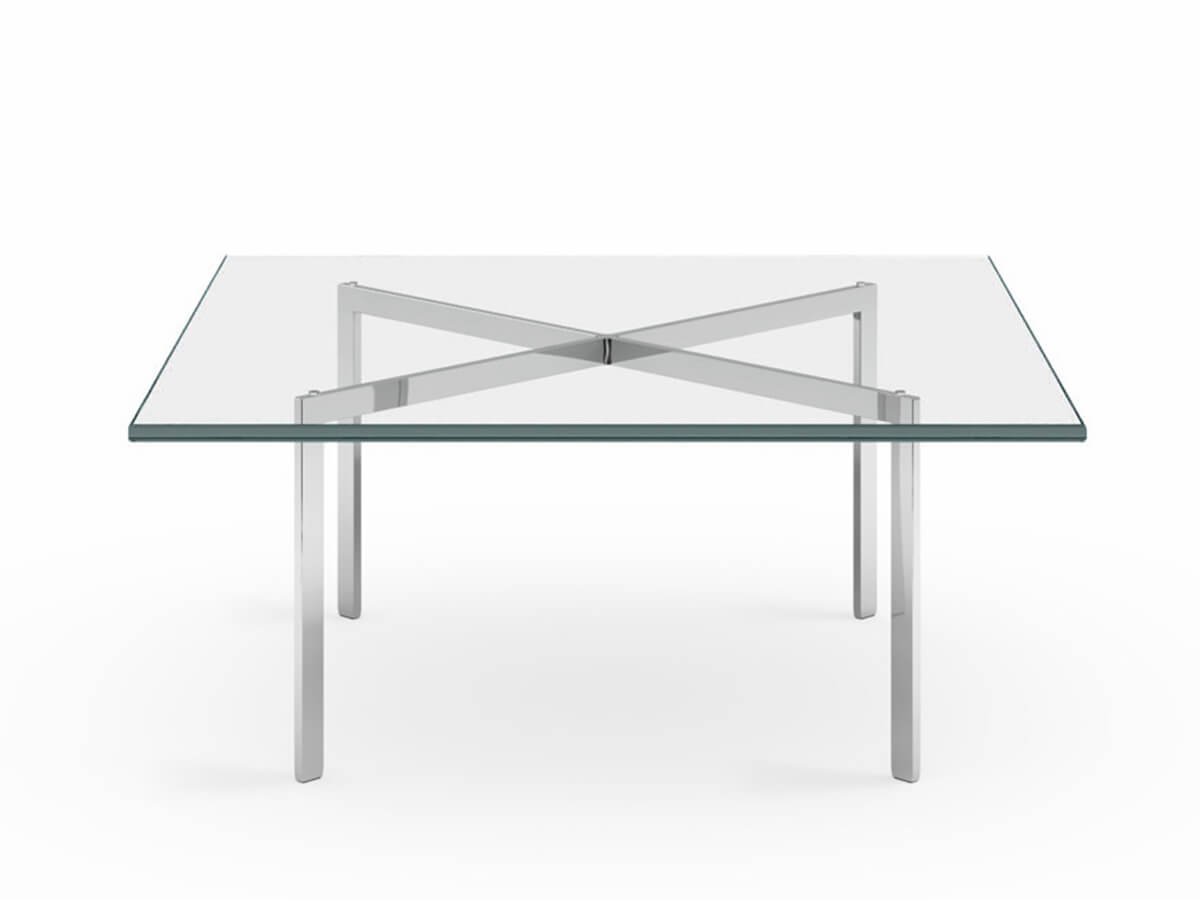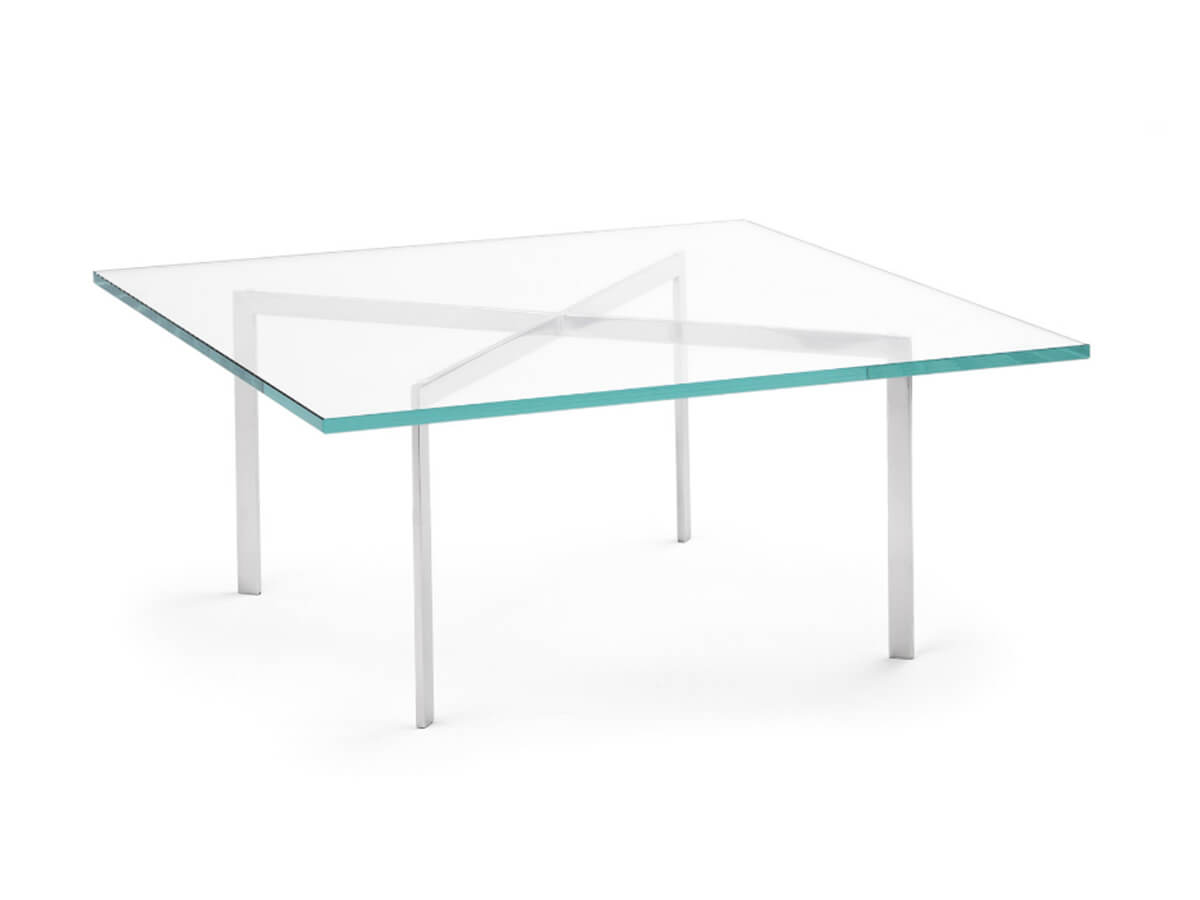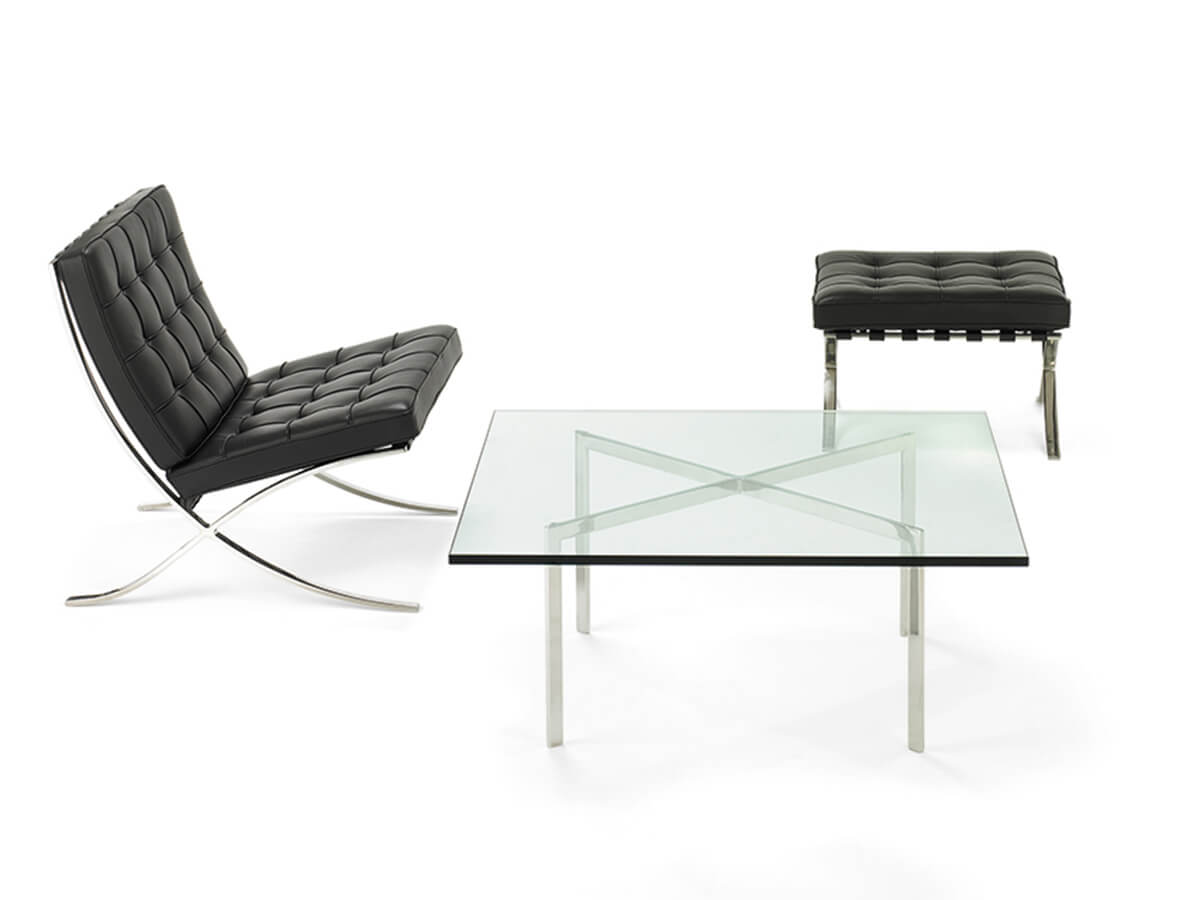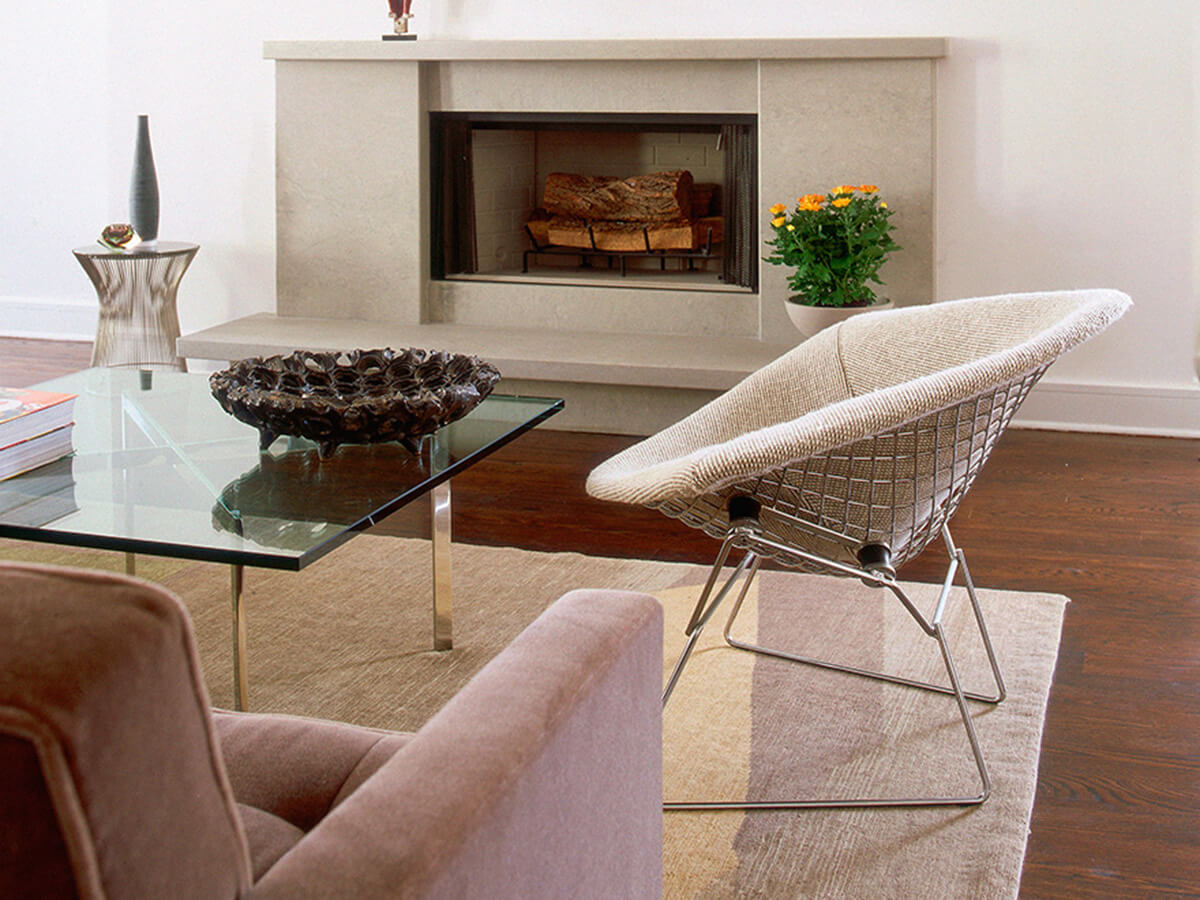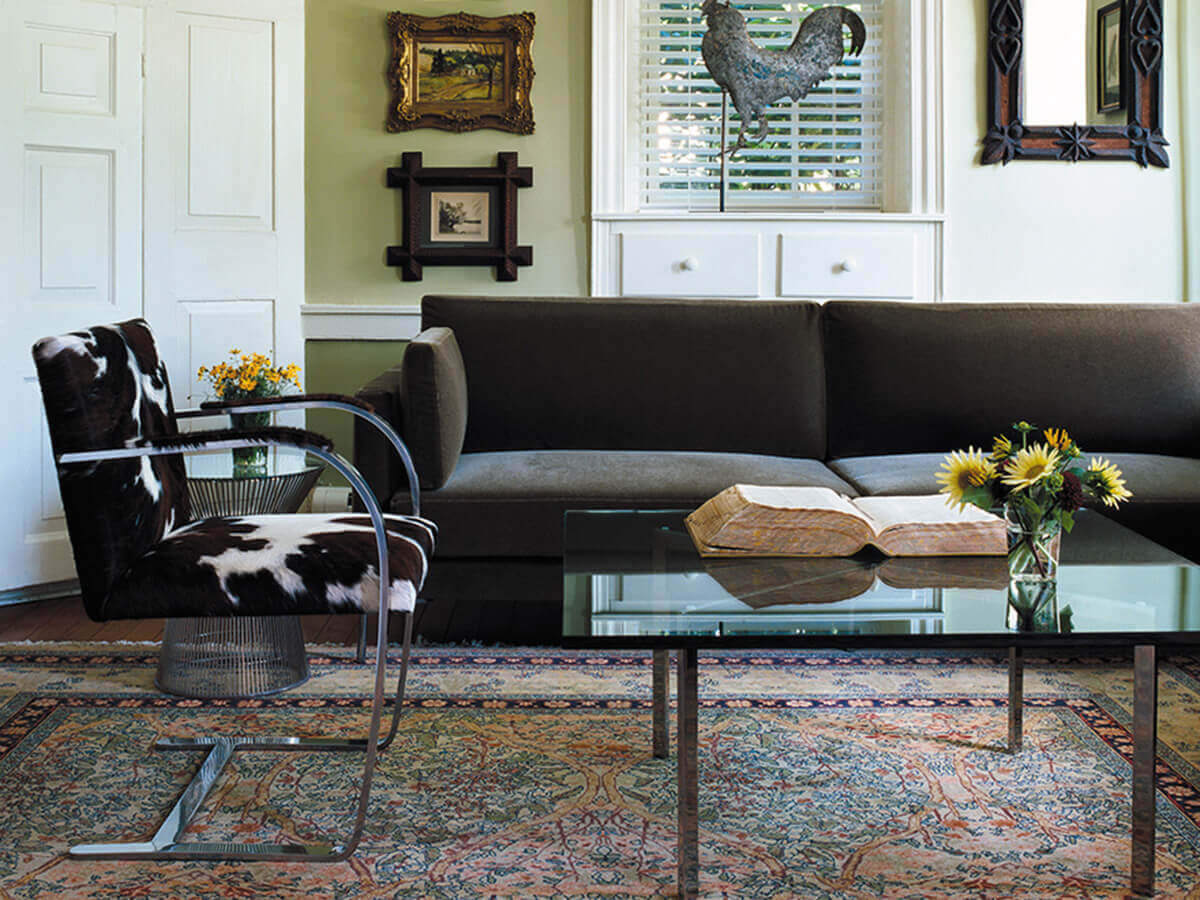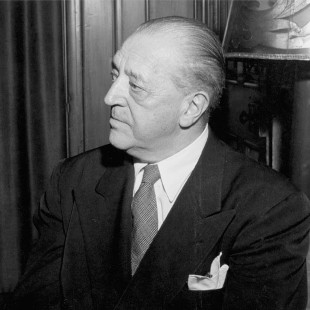Knoll
Barcelona Coffee Table
Price € 2.843,00
The genius of Ludwig Mies van der Rohe signs this umpteenth work of design made in Knoll, summarizing the concepts of simplicity and formal purity in a single piece of furniture. Barcelona is a coffee table that fits well into the rationalist and modernist current without neglecting a functionality that goes far beyond its forms. The base is made up of solid welded steel legs, joined to house the 15 mm thick transparent glass top with polished ground wires. This low table looks good in living rooms, offering a support surface that does not visually occupy the space, while filling it.
W.100 x D.100 x H.35 cm
Available also in H.46 cm
Salvioni Design Solutions delivers all around the world. The assembly service is also available by our teams of specialized workers.
Each product is tailor-made for the personal taste and indications of the customer in a customized finish and that is why the production time may vary according to the chosen product.
To discover the full range of services available, visit our delivery page.
Personalize your request
Sizes
Select
Select
Select
Landed in the United States at the beginning of the ‘30s, Hans Knoll, a young German-born son of a furniture-maker in Stuttgart, proposed to import into the new continent the modern European design, contemporary heritage of the Bauhaus. Died prematurely, his work was continued by his wife, Florence Knoll, who succeeded in establishing lasting partnerships with some of the greatest exponents of the modernist movement. Few years later the Knoll Associates was founded. Today, Knoll is not only a company of re-selling historic furnishings of great artistic value, but continues to innovate by offering creations of the major international design brands both in the home area and in the office furnitures sector.Read more
Designed by
Ludwig Mies van der Rohe
Ludwig Mies van der Rohe (1886-1969) was one of the leading exponents of the Modern Movement, both in the field of architecture and design. His maxim “Less is More” can be considered the motto of this trend, constantly aimed at reducing decorative frills and looking for pure and functional forms. Born in Aachen, of humble origins (he was the son of a stonemason specializing in funeral monuments), Mies spent the most important years of his training in the studio of Peter Behrens, master of the Deutscher Werkbund, before starting a career on his own that will lead him to create iconic buildings such as the German Pavilion of the 1928 Barcelona Expo or, later, the Seagram Building in New York and the iconic Casa Farnsworth. He was director of the famous Bauhaus School from 1930 until it was closed by the Nazis, who also forced him to emigrate to the USA in the late 1930s. There he continued his career with great honors and met Florence Knoll, of whom he was master, who with his company still produces all the most famous furnishings he designed.Read more
